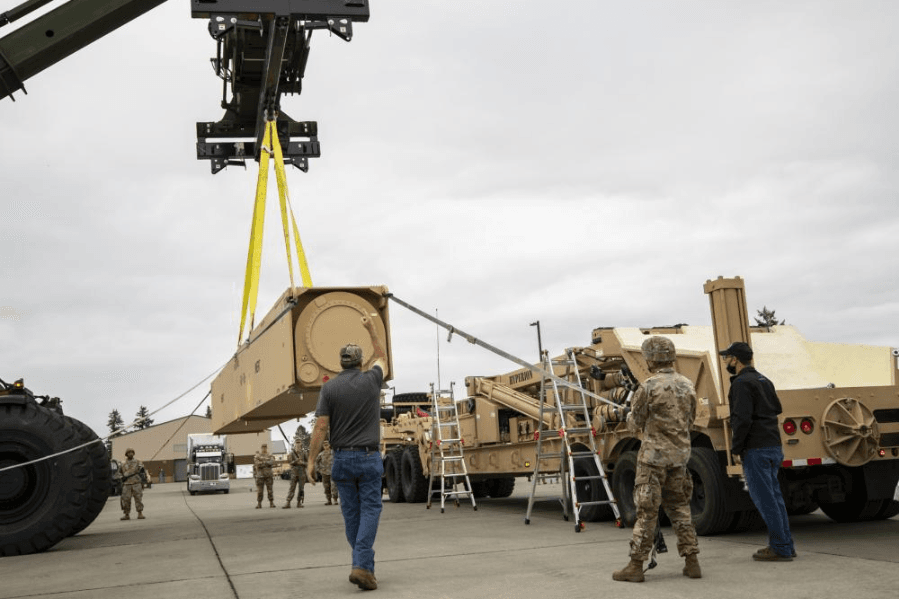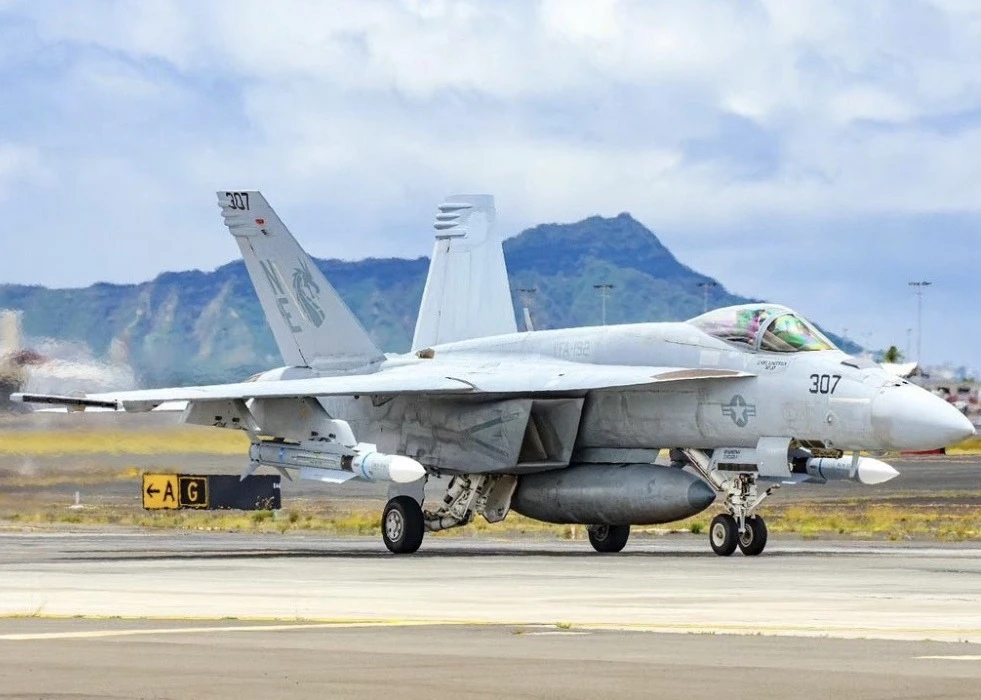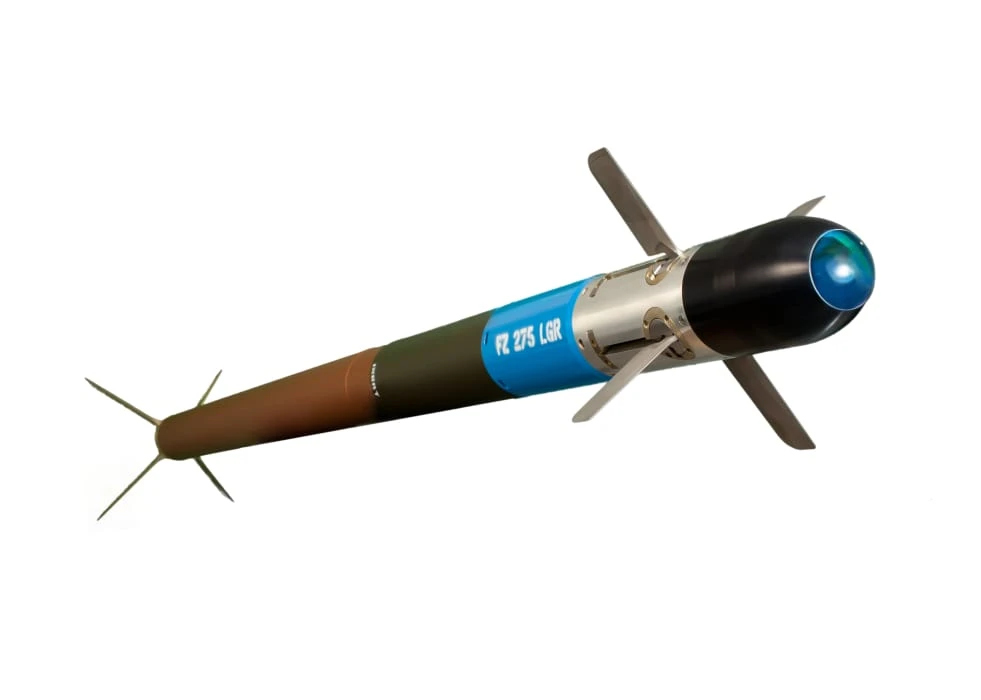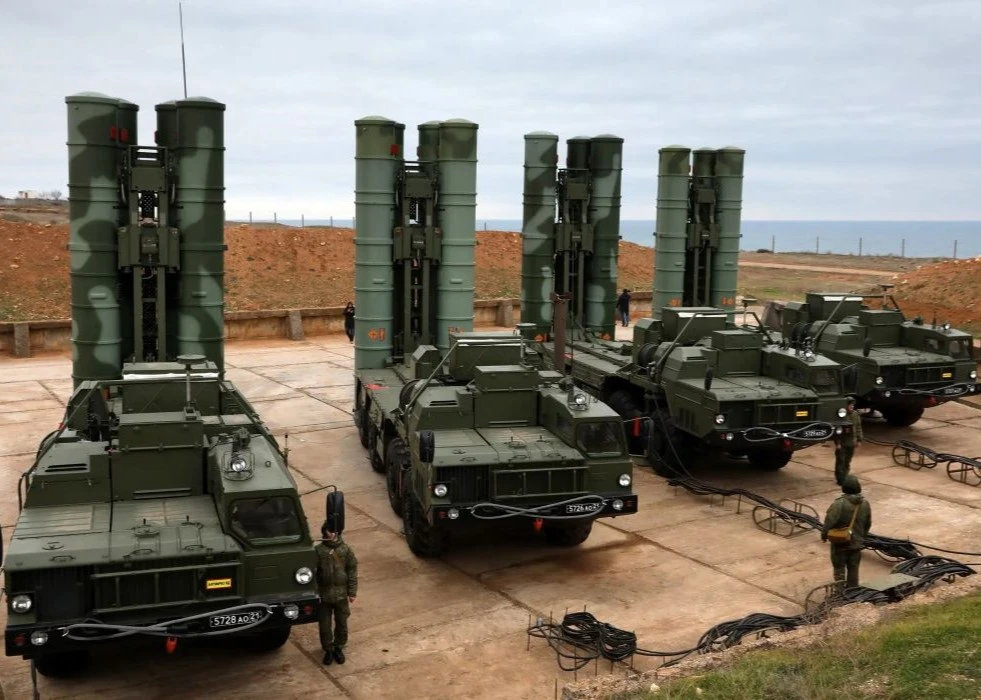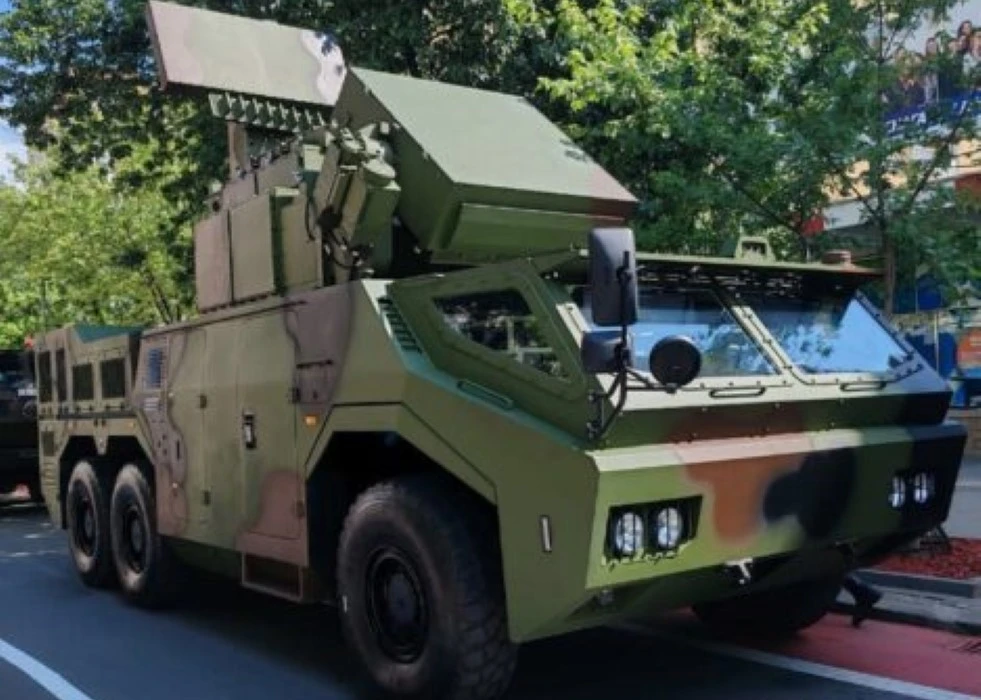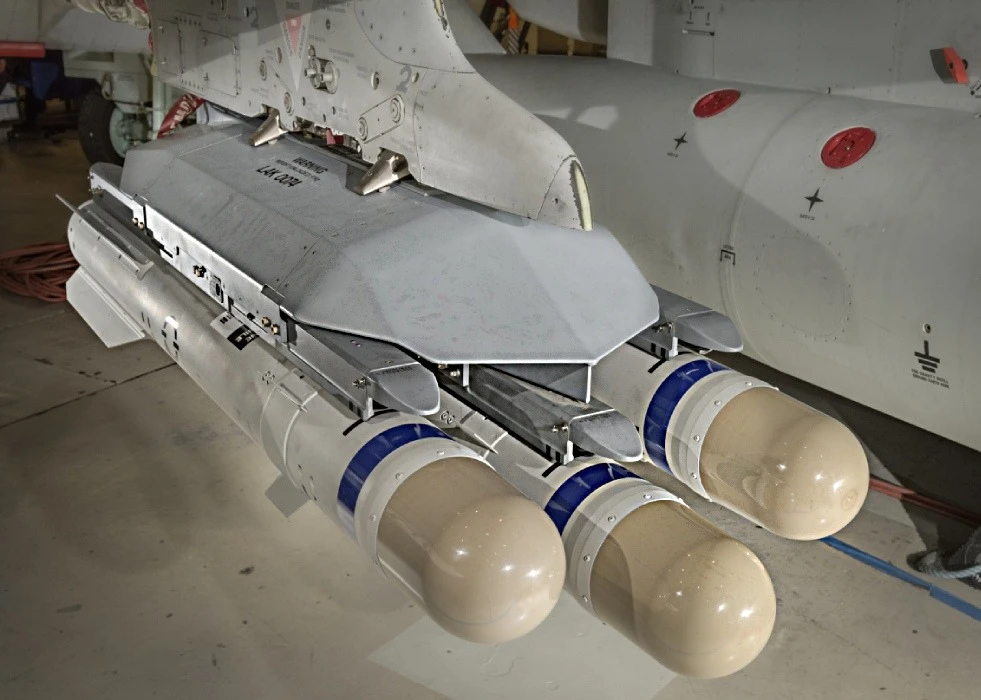On Oct. 7, 2021, the U.S. Army received its first prototype hypersonic hardware called “Dark Eagle” at Joint Base Lewis-McChord, Wash. The Army is prototyping the land-based, ground-launched Long Range Hypersonic Weapon (LRHW) that will provide residual combat capability to Soldiers by the Fiscal Year 2023.
According to service officials from the Rapid, the delivery of the first prototype hypersonic hardware to soldiers of 5th Battalion, 3rd Field Artillery Regiment (5 3 FA), 17th Field Artillery Brigade is completed two days ahead of the deadline Capabilities and Critical Technologies Office.
Army’s Long-Range Hypersonic Weapon or LRHW includes a battery operations centre, four transporter-erector-launchers, and modified trucks and trailers that make up the ground equipment.
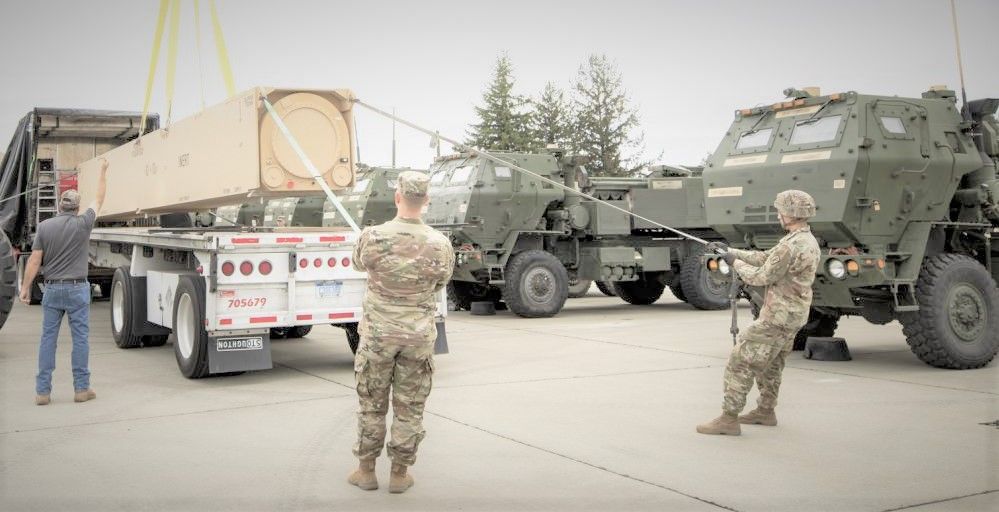 The Long-Range
Hypersonic Weapon, or LRHW, comprises a battery operations centre, four
transporter-erector-launchers, and modified trucks and trailers that serve as
ground equipment.
The Long-Range
Hypersonic Weapon, or LRHW, comprises a battery operations centre, four
transporter-erector-launchers, and modified trucks and trailers that serve as
ground equipment.
Because the domestic private sector had never built a hypersonic weapon, the Army collaborated with industry to develop the industrial base for the hypersonic weapon glide body. The service also manufactured launchers, trucks, trailers, and the battle operation centre required to assemble the weapon battery.
Lockheed Martin is the weapon system integrator for the Army’s hypersonic capability, which will be launched from a mobile truck. Dynetics was chosen to build the missile’s hypersonic glide body. The glide body is being developed for use by all military branches. However, it will be launched from different platforms depending on the branch.
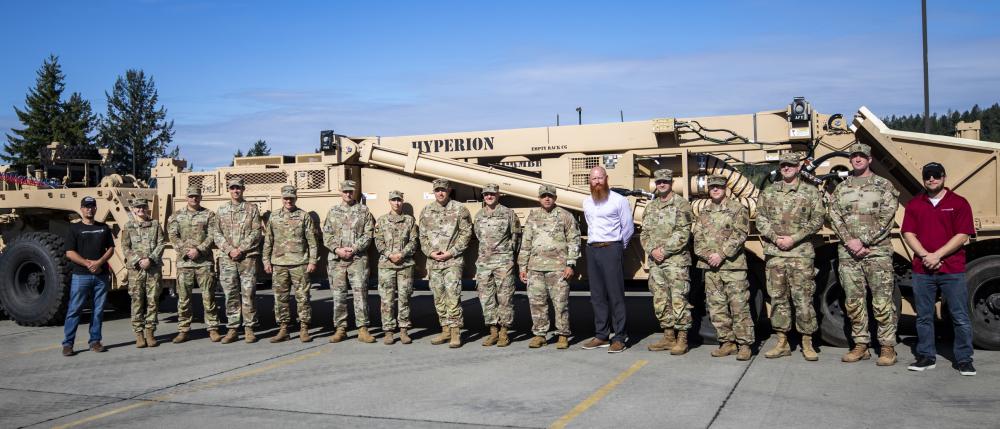
Now that it has the necessary equipment, the unit can begin training for the first joint flight campaign test with the Navy, scheduled for the first quarter of FY22. In addition, the unit will prepare for future tests in the fourth quarter of FY22 and the second quarter of FY23.
The first test of the Common-Hypersonic Glide Body, or C-HGB, occurred in March 2020, when a missile launched from the Pacific Missile Range Facility in Kauai, Hawaii, and hit its target with a 6-inch accuracy.
Hypersonic weapons can fly faster than Mach 5 — faster than the speed of sound — and can change altitudes and azimuths, making them difficult to detect. The C-HGB comprises the warhead, guidance system, cabling, and thermal protection shield of the weapon.
The 5-3 FA will not participate in the hypersonic flight test scheduled for the first quarter of FY22. The 5-3 FA, through training and a joint flight campaign, will help the Army develop the doctrine, tactics, techniques and procedures to operate the capability within formations.
This prototype, led by the Army Rapid Capabilities and Critical Technologies Office (RCCTO), deploys LRHW components to allow Soldiers to fully train with the system and create tactics, techniques, and procedures (TTPs). Hypersonic weapons, which can move at speeds greater than five times the speed of sound (Mach 5+), are a novel capability that provides a unique combination of speed, manoeuvrability, and altitude to defeat time-critical, well-defended, and high-value targets. The Army’s primary modernization aim is long-range precision fires, and hypersonic missile is one of the main modernization areas the Department of Defence seeks to ensure continued combat superiority.
The United States is racing to develop hypersonic weapon capability and systems to defend against hypersonic missiles. China and Russia are both working hard to develop and test hypersonic weapons. Russia has recently launched its Tsirkon missile from a submarine making the missile deployable anywhere in the world.


